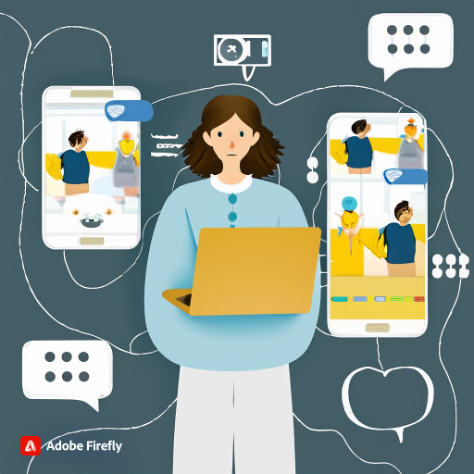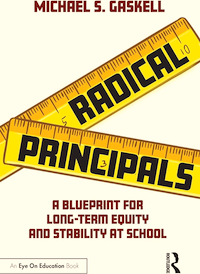Using Ambient Sound to Reduce Student Stress
Veteran school principal, podcaster and author Mike Gaskell has served in leadership roles across grades K-8.
By Mike Gaskell

The lure of social media is so strong it hijacks time from important activities like homework, reading, exercise, and face-to-face interaction. Excessive disruptions hinder our students’ focus on tasks and reduce productivity.
It came as little surprise to many when, in May 2023, the U.S. Surgeon General sounded the alarm, spotlighting the negative effects of social media on the mental health of children.
Dr. Vivek Murthy cited the urgent need for action from policymakers, technology companies, researchers, families, and young people to understand and address risks. His advisory recommended strengthening safety standards, promoting digital literacy, and encouraging responsible online behavior, to create safer and healthier online environments for children.
Concerns about increased levels of depression, anxiety, body dissatisfaction, and sleep problems motivated the Surgeon General’s call to address a national mental health crisis that has been significantly influenced by social media.

Social media can cause a sense of FOMO (fear of missing out) anxiety. Frequently checking social media seems to feed obsessive thoughts about missing potential social connections or events. For many students this manifests in compulsive, distracting usage patterns as well as increased stress and anxiety surrounding relationships and self-image.
There are many actions educators can take to help reduce the impacts of social media on our students’ mental health and ability to engage in the learning process. I want to explore just one strategy here – the use of ambient sound in our classrooms.
The Sounds of Learning and Creative Thinking
The research on ambient sound and learning offers some simple, practical ways that educators and families can immediately implement to minimize the negative effects of social media. Let’s explore a few of these.
Coffeehouse Chatter: Several research studies suggest that a moderate amount of ambient noise boosts creativity, including background noise mimicking coffee shop chatter (found on resources like YouTube). Like some forms of music, the soothing background chatter and clatter engages the mind without overwhelming it. This may help students to stay focused while the sounds prime their minds for creative insights.
During creative activities in class, teachers might use coffeehouse or cafe background noise from sources like this one:
Playing the sounds class-wide gives students’ minds the space to be immersed in their work while elevating inventive thinking.
Binaural Beats: This is a tool to optimize independent student activity, because the receiver keeps headphones or earphones on. Binaural beats target the auditory nerve of the brain with two different frequencies. When two different frequencies interact with our brain, we begin to perceive a third virtual sound. This third virtual sound is what sensitizes the brain, tailored to the type of brain waves it triggers.
Binaural beats offer diverse ways to achieve desirable states. Our emphasis here is on how they stimulate focus, productivity, and creativity. Like coffeehouse chatter, you can easily find binaural beats videos on YouTube. Here’s an example:
Remember that binaural beats are practical for independent learning, whereas coffeehouse chatter offers both independent learning and whole class engagement.
ASMR: Like coffeehouse chatter and binaural beats, ASMR (autonomous sensory meridian response) sounds trigger the brain for a relaxed, focused, anxiety reducing sensation, which involves the reward system, social behavior, and empathy. ASMR activates the brain regions associated with experiences like social bonding and musical frisson (a satisfying sensation of chills or tingling felt on the skin).
There are ASMR videos on YouTube aplenty, and here is an example of one. Here’s another. You can also experience ASMR effects in videos like this one from Country Life VLOG which combines activity and serenity.
Finding the Focus and Flow
We can help students build the focus and flow they need to learn, grow, and thrive – even in today’s disruptive digital world. The solutions lie in strengthening their self-awareness and giving them experiences in the classroom that lessen their anxiety, boost their creativity, increase attention, and promote a positive emotional state. Ambient sound is one of many tools that can help.
Building any good habit takes repetition – and each small win will compound. Let’s empower children to find focus and meaning amid the social media blitz surrounding them.

Mike’s books include Radical Principals: A Blueprint for Long-Term Equity and Stability at School (Routledge/EOE, 2023); and Leading Schools Through Trauma: A Data-Driven Approach to Helping Children Heal (Routledge/EOE, 2021). See his other articles for MiddleWeb here.































